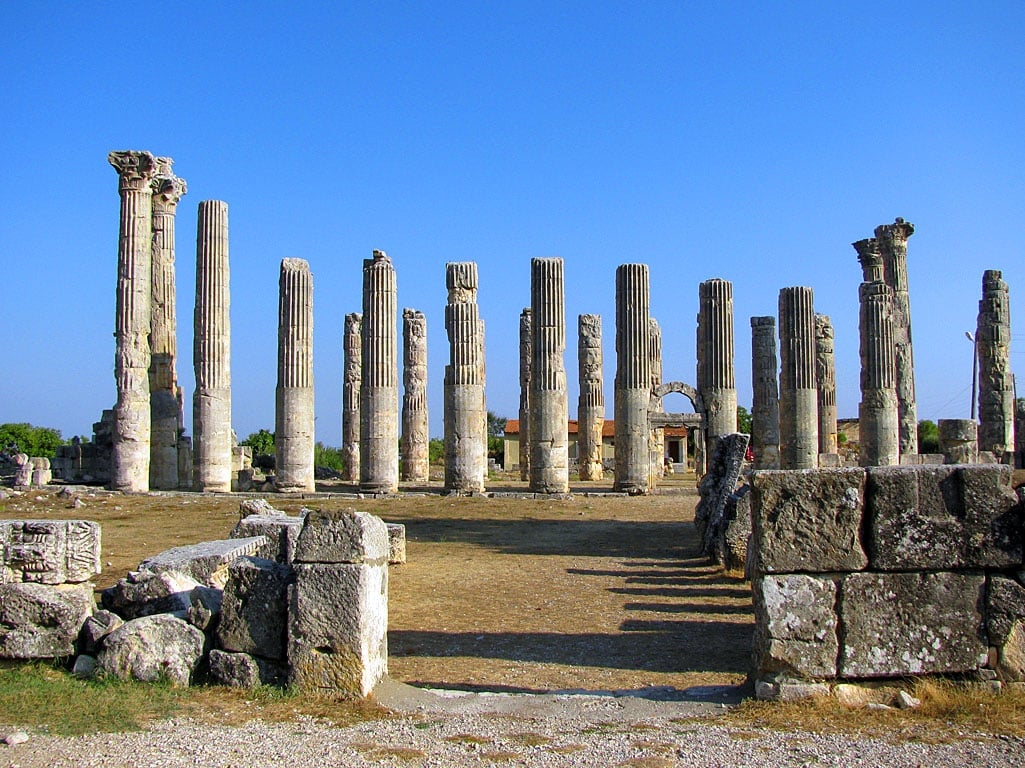1,600-Year-Old Weights Shaped as Greek Letters Found in Ancient Diokaisareia, Turkey
Source: GreekReporter.com

Archaeologists in Turkey have uncovered a complete set of iron weights shaped like ancient Greek letters, along with a Roman-era balance scale, in the ruins of the ancient Greco-Roman city of Diokaisareia, originally part of the Hellenistic kingdom of Olba. During the Ottoman period the city was named Uzuncaburç.
The discovery, believed to be about 1,600 years old, was made during excavations led by Mersin University in coordination with the Turkish Ministry of Culture and Tourism. The work is part of the national “Heritage for the Future Project,” which aims to preserve and promote significant archaeological sites in the country.
Find sheds light on local trade practices
This year’s excavation focused on one of the main colonnaded avenues of the city, long thought to have been a commercial center. Archaeologists uncovered shop structures, coins, cutting tools, and most notably, the iron weights and balance scale.
Each weight is shaped like a letter from the Greek alphabet. The set is believed to have been used for weighing goods in local markets during the Late Antique period, roughly between the fourth and seventh centuries A.D.
1,600-Year-Old Weighing Scale Unearthed at Uzuncaburç Ancient City
A complete weighing scale set, believed to date between the 4th and 7th centuries AD, has been uncovered during excavations at Uzuncaburç (ancient Diokaesareia), located in Mersin’s Silifke district, Türkiye.… pic.twitter.com/L7xtwLezFr
— History Content (@HistContent) July 8, 2025
“This is the first time we’ve found a complete measuring system from this era,” said Professor Ümit Aydınoğlu, the excavation director. He explained that each piece corresponds to an ancient standard known as the litra, which ranges from approximately 150 grams to 1.5 kilograms.
Greek lettering suggests a unique trade system
The use of Greek letters to label the weights may point to a merchant-specific or regional trade system. Aydınoğlu said this detail offers rare insight into the commercial life of the city during its Roman period.
Mersin Uzuncaburç’ta 1600 yıllık terazi takımı bulundu.
Mersin’in Silifke ilçesindeki Uzuncaburç Antik Kenti’nde yürütülen kazılarda, Geç Antik Çağ’a ait 1600 yıllık bir terazi takımı ve Antik Yunan harfleri şeklinde 5 demir ağırlık gün yüzüne çıkarıldı. Kazılar, Kültür ve… pic.twitter.com/z3NS6XIchj
— arkeolojihaber ® (@arkeolojihaber) July 9, 2025
This find supports the theory that Diokaisareia was a major commercial hub, and its colonnaded streets were likely the main trade arteries.
Ancient Diokaisareia
Uzuncaburç, located about 30 kilometers (18.6 miles) north of Silifke, was once known as Diokaisareia, a name that reflects the city’s Greco-Roman heritage.
The name itself combines Greek and Roman elements, symbolizing the cultural fusion that defined the region. Public spaces—such as temples, colonnaded streets, and marketplaces—were built in the Hellenistic style, an urban layout that continued to shape the city even after it came under Roman control.
Later, Emperor Vespasian granted the city official status and the right to mint its own coins, strengthening its regional importance. As Christianity spread, many temples were repurposed as churches. Over time, the city declined and was eventually abandoned.
During the Ottoman period, Turkmen settlers founded a nearby village and named it Uzuncaburç—“tall bastion” in Turkish—after the ancient Hellenistic tower located on the site. Today, both the ruins and the town share the same name.
Site development aims to boost tourism
In addition to the excavation, the team has improved the site for tourism. New signs have been installed to explain historical landmarks, walking paths have been arranged, and access has been upgraded.
Professor Aydınoğlu said the long-term goal is to transform Uzuncaburç into one of Turkey’s model archaeological villages and a leading destination for cultural tourism.
The original article: belongs to GreekReporter.com .
